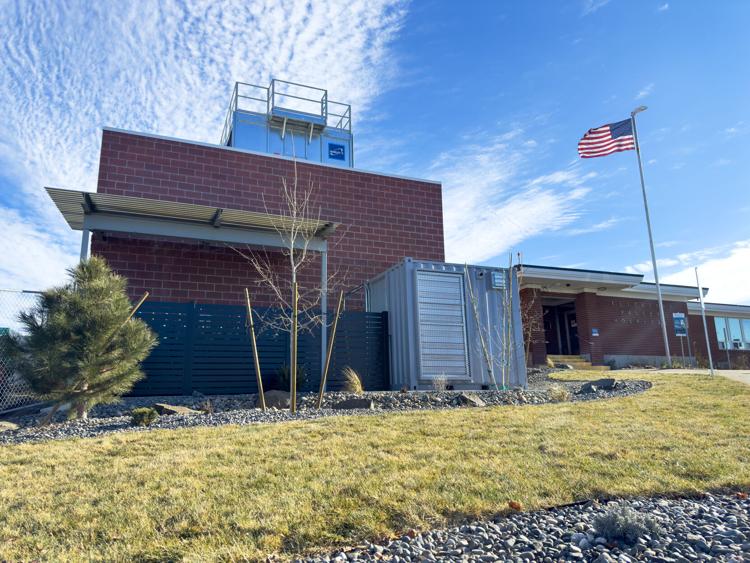In the small town of Goldendale, Washington, a bold experiment is underway that could change the way hospitals think about backup power. Klickitat Valley Health (KVH), a rural hospital, has embarked on an ambitious project to augment its aging diesel generators with hydrogen fuel cell technology. Led by Jonathan Lewis, the hospital’s Director of Support Services, this initiative highlights both the potential and first mover challenges of integrating hydrogen power into healthcare.
The State of Emergency Power at KVH
When Jonathan Lewis arrived at KVH, he quickly realized the hospital’s electrical infrastructure was outdated and unreliable. The generators dated back to 1967 and were powered by surplus World War II engines. The hospital often relied on extension cords to compensate for the failing diesel generator, and the electrical system had numerous arc-fault issues. The situation was so dire that state inspectors mandated urgent upgrades.
However, there was one major roadblock: funding. The estimated cost for the necessary electrical upgrades was $2 million, an amount the hospital simply did not have.
The Hydrogen Opportunity
After two failed attempts to secure state appropriations, an unexpected opportunity arose. A local lobbyist, who also worked with the Green Hydrogen Alliance, suggested that integrating a hydrogen fuel cell into the hospital’s power system might unlock state funding. With this insight, KVH expanded its initial $2 million project to $3 million and successfully secured funding from the Washington State House of Representatives.
Choosing the Technology
KVH partnered with Toyota and Kohler to explore hydrogen fuel cell options. The chosen system, a 100-kW stationary hydrogen fuel cell, is an adaptation of the fuel cells used in Toyota’s Mirai vehicle. However, rather than integrating the fuel cell into the hospital’s essential electrical system, which would be a complicated and costly endeavor, it was decided that it would supply power to the non-emergency outlets in patient rooms and the hospital’s main conference room, which doubles as their emergency operations center.
Currently, the system has a limited hydrogen storage capacity, allowing for only about 4 hours of runtime at full load, or approximately 20 hours at connected loads. Moreover, the hydrogen itself is not yet “green”; it is trucked in from California, making it costly at $1,600 per refill.

Navigating Regulatory Hurdles
While the hospital made significant progress in obtaining the technology and funding, it encountered major regulatory and engineering challenges. Hydrogen is a relatively new energy source in healthcare, and existing safety codes do not yet provide clear guidance for its use in hospitals.
One major challenge emerged when local regulators interpreted safety codes in a way that would have required a two-mile evacuation radius in case of a hydrogen leak, which is an impractical requirement for a hospital located in a small town. Fortunately, technical assistance from Pacific Northwest National Laboratory and the Center for Hydrogen Safety helped clarify that a 20-foot safety radius was sufficient, significantly easing permitting concerns.
Still, the hospital faced a lack of specialized engineering support. Major engineering firms declined involvement, citing the project as outside their expertise. Eventually, KVH hired Mazzetti to get the project through regulatory hurdles, especially with the state health licensing authority. There were several unresolved hydrogen code compliance issues that needed to be addressed. At this point, Mazzetti brought Total Hydrogen, a firm that specializes in hydrogen safety and regulatory compliance, into the project. Total Hydrogen was able to show the project complied with key safety requirements such as setback distances and electrical classification zones, and the project moved forward to final approval. Mazzetti serves as Hydrogen System and Fuel Engineers on this project, providing critical expertise and guidance.
Project Status and Future Steps
Despite delays in obtaining final permits, the hospital has moved forward with installing the fuel cell system, including a manifold system for hydrogen storage. The system is now in place next to the hospital’s new chiller plant. The formal ribbon-cutting ceremony was attended by representatives from Toyota, Kohler and Washington’s Governor. In March 2025, the system received approval from the state, marking a significant milestone in the project’s advancement towards full operation.
KVH was also working to integrate their building into a community microgrid that would have improved community resilience, cost, and environmental impact, but the current Federal Administration considered such a project to be waste, fraud, and abuse, and cancelled the grant.
Lessons for the Future
KVH’s experience with hydrogen fuel cells offers valuable lessons for other healthcare facilities considering alternatives to diesel generators:
- Regulatory Complexity – Hydrogen is governed by multiple overlapping safety codes, many of which are not yet designed for hospital applications. Future projects will require clearer permitting pathways and more engineering expertise.
- Cost Challenges – Hydrogen fuel is still expensive, and green hydrogen remains largely unavailable in most regions. Cost reductions and better storage solutions are needed for widespread adoption.
- Engineering Gaps – Even large engineering firms lack experience with hospital-based hydrogen projects. Expanding engineering expertise in this area will be crucial. (Or you can hire Mazzetti).
- Microgrid Potential – Hydrogen could complement other renewable energy solutions like solar and battery storage
Conclusion
While hydrogen fuel cells are not yet a cost-effective replacement for diesel generators, KVH’s project demonstrates that they can work in healthcare settings. As hydrogen technology advances, costs decrease, and regulatory frameworks become clearer, hospitals may find fuel cells to be a viable, low-emission alternative to traditional backup power sources.
For now, Goldendale’s small hospital has placed itself at the cutting edge of energy innovation, paving the way for a cleaner, more resilient future in healthcare.
